Milk bath has grown in complexity over the century. It is effective, and the whole world deserves to have a taste of its goodness! Our today’s article will teach you how to make Cleopatra’s milk bath, as well as will explain all the milk bath benefits you should know.
In this article:
- Milk Bath History and Facts
- Why Should You Take Milk Baths?
- Milk Bath Benefits for Your Skin
- How to Make a Milk Bath? DIY Milk Bath Soaks
- More Tips for Milk Baths
Milk Bath History and Facts
The milk bath trend did not begin today, as it has an extensive and fascinating history. Let’s just look at milestones in the creation of milk bath.
Cleopatra Loved Milk Baths
Do you remember the eighth product listed above? Well, it was inspired by this woman right here. Ancient Egypt’s Cleopatra, the Pharaoh Queen, was known to have beautiful and radiant skin.
Her skin was kept soft and glowing thanks to her frequent milk baths. She was known to bathe in donkey milk, which resulted in the need for 700 lactating donkeys for her daily milk baths.
Milk contains lactic acid, which gently exfoliates dead skin cells to give you that glow your skin deserves. The lactic acid in animal milk is very mild, so it will not strip your skin of needed moisture.
Lactic acid is an alpha-hydroxy acid (AHAs), which dissolves dead skin cells. Dead skin cells cover up the new one and make your skin dull and dry, while milk penetrates through the pores and gives your skin moisture.
Cleopatra was also known to include honey in her daily milk bath rituals because of its benefits. Honey clears up skin blemishes, and with the help of the two natural products, you are guaranteed a ravishing complexion.
The Romans Had Milk Baths
After Cleopatra became food for worms, Empress Poppaea Sabina – Roman Emperor Nero’s second wife – set this bathing fashion. Based on the accounts of historians, she believed it was medicinal. And who wouldn’t love bathing in warm milk all day?
She also washed her face with donkey milk every day in order to remove wrinkles on her face and preserve her fairness.
Milk Baths Were for the Wealthy
During the years Charles II reigned, the popularity of milk baths increased amongst the wealthy. The nobles often indulged in having regular and luxurious milk baths. Even Diane de Poitiers took milk baths in order to stay youthful and beautiful.
Europeans Recycled Milk
In the 1600s, wealthy Europeans sold off milk, which they had bathed with, to the lower class. It reduced pressure on cows and made recycled milk cheap on the market.
One of the wealthy men in those days was Marechal Duc de Richelieu, who had his servants take the milk for sale after bathing in it. There were also some controversies about Swiss innkeepers who used milk their guests had bathed in to make cheese.
Some Used Milk Baths for Health Issues
During pre-revolutionary France, people bathed in milk for diverse health benefits. Then-Governor Marquis de Rochechouart was ordered by his doctors to bathe in women’s breast milk to save his life. Unfortunately, it was never discovered whether it worked or not. But, in recent times, some doctors advise arthritis sufferers to have milk baths.
In the early 1900s, a popular singer by the name Anna Held was reported to have had daily milk baths to stimulate great skin. Even though she said she only did it a couple of times in a week, her husband revealed she had a milk bath every single day.
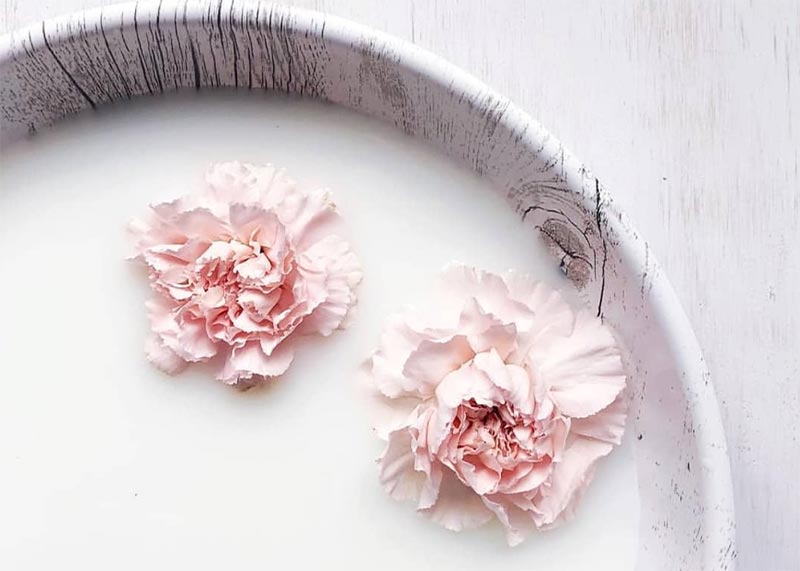
Milk Bath Therapy in Recent Times
Milk baths are in season and they are here to stay. Today, milk baths are taken by people who value proper skin care. And not surprisingly, a lot of milk bath products are available on the market at affordable prices. Hence, you do not have to break the bank or reuse someone’s bath milk to have a luxurious milk bath in this century.
Further, upscale spas offer a lot of skin milk treatment (including milk baths) to show you how people have discovered milk’s wonderful benefits. Milk is often included in other skincare products, which range from moisturizers and body creams to body wash products and natural skin-lightening face masks. Next time you go skincare product hunting, why not buy one with milk?
Even celebrities often flaunt their daily milk bath routines on Instagram. Telly presenter Holly Willoughby does 36 pours of milk into her bathtub. She has milk baths because she believes it loosens dead skin cells, and her beautiful skin is often complimented on social media.
This trend has raised wild milk bath culture around the world. Of course, fans would love to look as flawless as their beloved public figures, and celebrities have gone as far as to making how-to-dos for their fans to copy and try.
Similarly, an interviewer asked Mariah Carey if she bathes in French mineral water like the rumors say. She replied that she only bathed in milk and used it as a beauty treatment. Since then, her fans have been asking her all over social media about her milk baths.
When it comes to beauty bloggers, they think highly of milk and a great percentage of them often include milk in most of their do-it-yourself (DIY) skin routines. Normally, most DIYs are graced with plant products such as aloe vera, coconut oil, banana, olive oil, and shea butter.
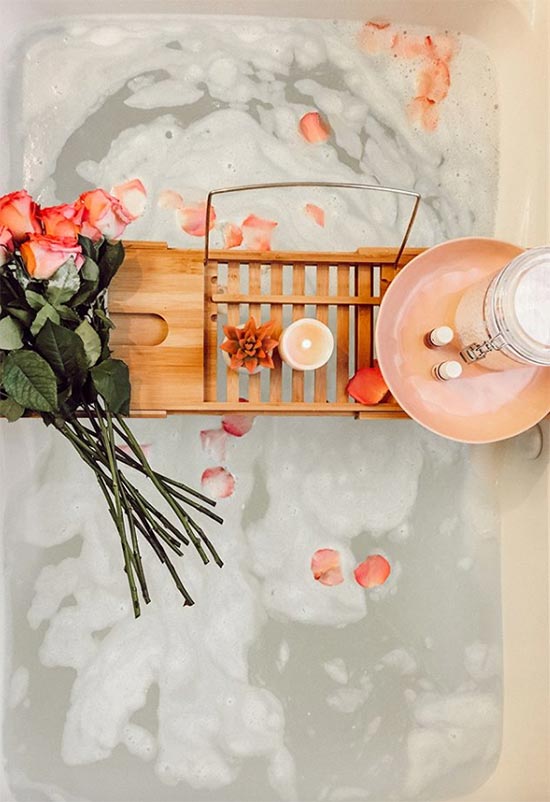
These ingredients (and many more) are widely known in the beauty world. Nonetheless, different kinds of animal milk are also popular today because of milk bath benefits and the enviable works of milk on our skin.
Even cosmetologists nowadays recommend everyday milk baths to get overall steady skin beauty. They also make lotions and body creams to suit the skin type of specific individuals who have chronic skin conditions. Some wealthy individuals even go as far as requesting special milk bath formulas made for them in their quest for flawless skin.
In summary, people have begun to accept milk as a part of modern beauty culture just like mud face masks or activated charcoal for teeth whitening. Families even buy milk bath products in bulk as a new accepted trend and a necessity to get great skin for the whole family.
Why Should You Take Milk Baths?
In the simplest form, having a milk bath means bathing with milk. Some prefer to soak a bathtub with milk, while others prefer the bowl-to-body technique. Even if we disregard the fact that the latter is quite outdated, we can all agree that the former is the best option. This is because your skin has enough time to take in all the protein.
Moving on, users of milk baths are often in awe that something as common and affordable as milk could give such great results in a short while. That brings us to the benefits of milk baths.
First, did you know milk baths smoothen your skin? This is not rocket science. Acne, pimples, and blackheads are an eyesore, as they usually leave your skin scarred or unbalanced, depriving you of healthy-looking skin.
Why waste hundreds of dollars on industrial products, which only leave your skin sunburned and tanned? Why buy harmful products with steroids, mercury, hydroquinone, or any other scary ingredient that has numerous side effects – hello, cancer!
Milk is a product of nature, is quite mild, and – most importantly – has rapid results. Below are controversial questions people ask pertaining to milk baths.
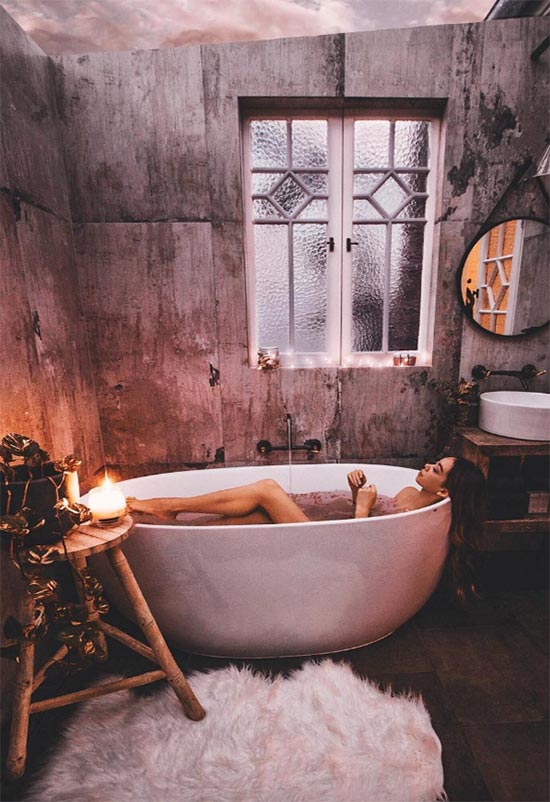
Q: I am lactose intolerant, can I still have milk baths?
A: Of course, you can have milk baths. The milk is not consumed so it will not trigger your allergy.
Q: Which milk fat is better: low- or high-fat milk baths?
A: Choose a type of milk with high fat because a lot of fat is needed to get the job done. And yes, low-fat milk works as well, but not as fast.
Q: Can I mix my milk bath with another natural product?
A: Yes. In fact, I recommend having your first milk bath mixed with honey to give the milk bath enough moisture.
Q: Do I use soap in the milk bath?
A: No, you should not use soap during the milk baths. However, you can always use it after to wash away milk residue.
Alpha Hydroxy Acids (AHAs)
Why does lactic acid work so great in milk? Lactic acid is from a family of AHAs as we mentioned earlier on. The AHAs could be obtained from a natural product or synthesized. AHAs penetrate the top layer of the skin and shed off the dead skin cells. AHAs also allow the skin to rejuvenate itself very quickly.
- Natural acids are mild and will cause skin irritation if used properly.
- It will not dehydrate your skin like toilet soap when bathing.
- It prevents skin dryness and gives your skin moisture.
- It smoothens and glows your skin.
- AHAs are often found in expensive skincare products.
Milk Bath Benefits for Your Skin
One cannot overemphasize the glorious benefits of having regular milk baths.
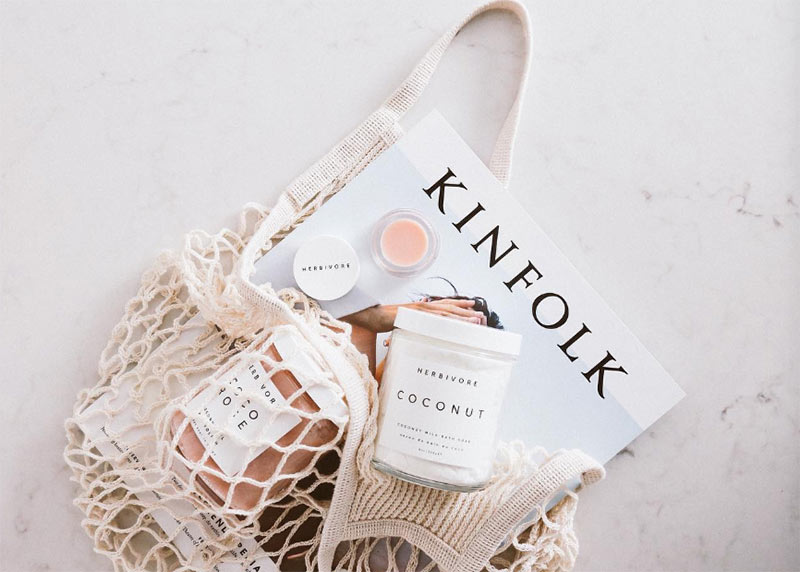
- Bathing in milk gives you a mild exfoliation.
- Milk baths make your skin firm and reduce its oily feel.
- Milk baths enhance relaxation. Milk provides a relaxing sensation whether you are having a cup of tea or a milk bath. It gives a comfortable and calm feeling to the person who indulges in the milk bath. Some believe milk baths eliminate work stress and improve overall health. Sweet-smelling lavender, rose, or any other nice flower is a good extra to having a relaxing milk bath.
- Milk baths are very economical. They save you a lot of money from buying harmful beauty products. With the rise of affordability in the 21st century, you do not have to be King Solomon to afford powdered milk or milk bath packages. It is both affordable and effective – that is one key benefit of milk baths.
- Milk baths smoothen the skin. You do not need an encyclopedia to tell you this one. Milk has protein and fat, which enter the pores in an effective attempt to smoothen the skin. Milk baths do not only leave your skin smooth, but also they soften it tenderly. And this is the one time high fats are encouraged to be used.
- Milk removes wrinkles and fine lines on the skin, thereby reducing signs of aging on the face. You can look a lot younger by bathing in milk every day, even though plastic surgery seems like an easier way of looking younger. If you do not want to go under the knife, milk is the new plastic surgery! You might even be the modern day Cleopatra, who knows?
How to Make a Milk Bath? DIY Milk Bath Soaks
If you do not want to buy ready-made milk bath products, you can make your own milk bath soak as well. There are some other natural products you should include in your milk bath soaks to enjoy increased milk bath benefits.

Types of Milk Used in Milk Bath
Do you want to have your milk bath and wonder which milk or milk product to use? Well, you can opt for any of these:
- Powdered milk
- Almond milk
- Cow milk
- Goat milk
- Coconut milk
- Soya milk
- Milk proteins
- Human breast milk
- Dried milk
- Buttermilk
Do note that as long as the milk is rich in oils, it can work wonders.
1. Milk + Honey Soak
Pour two cups of whole milk (preferably the creamy one) and 1/2 cup of honey. Mix both ingredients thoroughly to pour into your bathtub. You can soak in the bathtub or manually pour on your body.
2. Baking Powder + Olive Oil + Milk Bath
Combine a proportional amount of powdered or liquid milk, olive oil, and baking powder in a bowl. Mix it thoroughly and pour into your bathtub. Your milk bath is ready!
3. Milk + Carrot Oil + Unsweetened Yogurt (for Skin Lightening)
Mix the milk, carrot oil and unsweetened yogurt in a bowl. (They should all be proportional). Pour the mixture into a bucket of clean water and pour it into your tub.
4. Milk + Rosewater
The proportion of milk to rosewater should be 3:1. Then, get a clean bucket, mix the two organic products together, and pour in your bathtub. Rosewater is known for fading blackheads. Also, it is a mild bleach and works well with milk. Remember, moderation is key in the use of rosewater to reduce sensitivity to the sun.
More Tips for Milk Baths
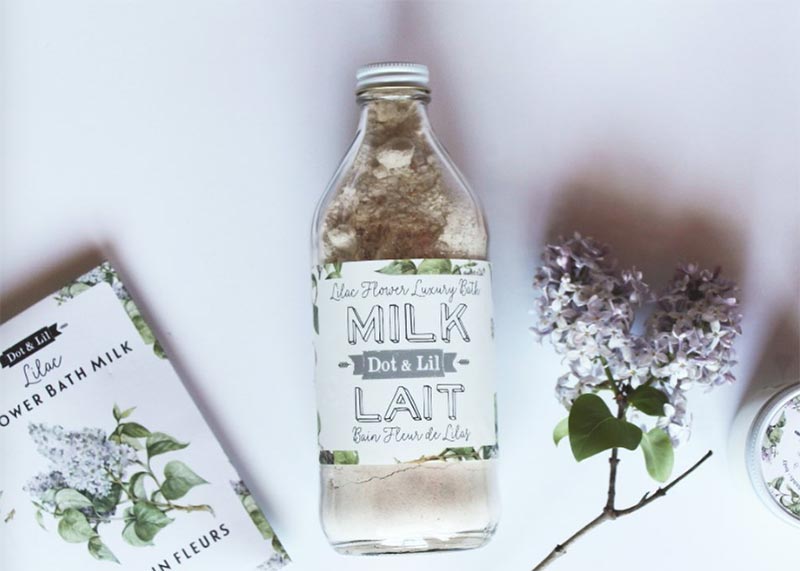
- Use the creamiest form of milk. It should have a lot of fats so it can work properly.
- Wash your body with soap after the milk bath to clean milk residue.
- Do not allow milk to touch your hair, it will become greasy afterward.
- Scented flowers with milk baths add flair to the bath.
- Do not soak too long in milk – moderation is key.
- Milk masks are not a bad idea.
- Use fresh milk as often as possible.
- Try a variety of milk bath formulas.
- Be creative in combining milk and other natural products for your milk baths. Milk baths are not only beneficial but are also relaxing. According to legends, Cleopatra was the originator of the milk baths trend.
Photos via @sabrinagrantn, Instagram





